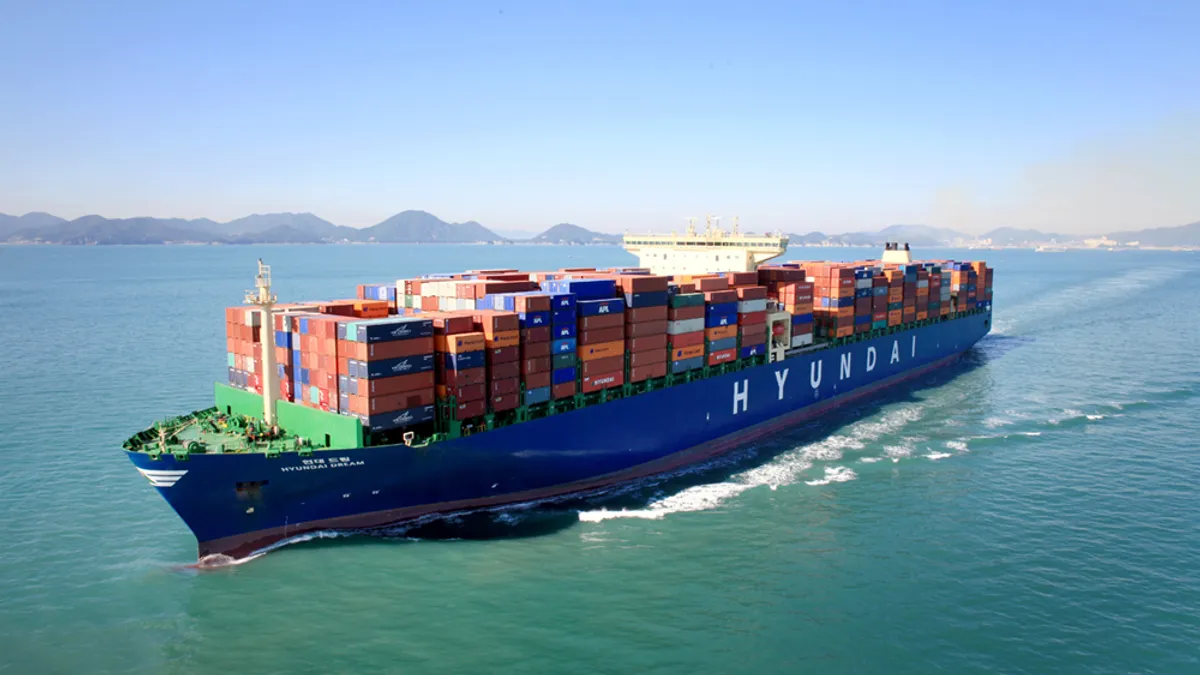Dive Brief:
- The International Maritime Organization (IMO) recently released three new guides to help countries reduce shipping and port emissions as environmental regulations ramp up, according to a press release.
- The three guides include measures to determine a country's maritime energy efficiency emissions status, a guide on strategy development and a guide for incrporating new regulations into national law. The organization will also hold training sessions in participating countries.
- The guides come in advance of a meeting later this month where the IMO will decide whether to impose a global sulfur emissions cap, which would decrease acceptable emissions to 0.5% from the current 3.5%, Reuters reports.
Dive Insight:
International regulation is slowly implemented given the various national compliance processes, but every once in a while a concerted international effort can lead to rapid change.
Such is the case with greenhouse gas emissions in the shipping industry: statements at this year's Paris Climate Conference recognized the shipping industry as one of the largest global polluters and slowest adopters of clean energy. The IMO's guidelines, training sessions, and upcoming sulfur cap decisions are just a few examples of a global environmental movement.
But why should supply chain managers care?
For advocates of sustainable supply chains, these are great news and resources pushing carriers to reduce their greenhouse gas emissions. However, for the vast majority of neutral managers, passage of such regulations would mean increased pricing in the short term as demand for clean energy spikes and supply delays to catch up.
Naturally, some shippers are ahead of the curve and using their procurement teams to source only from clean-energy carriers, but these are the exception, not the norm. Much depends on the late October IMO meeting, but the trend and international pressures for adoption are present.













